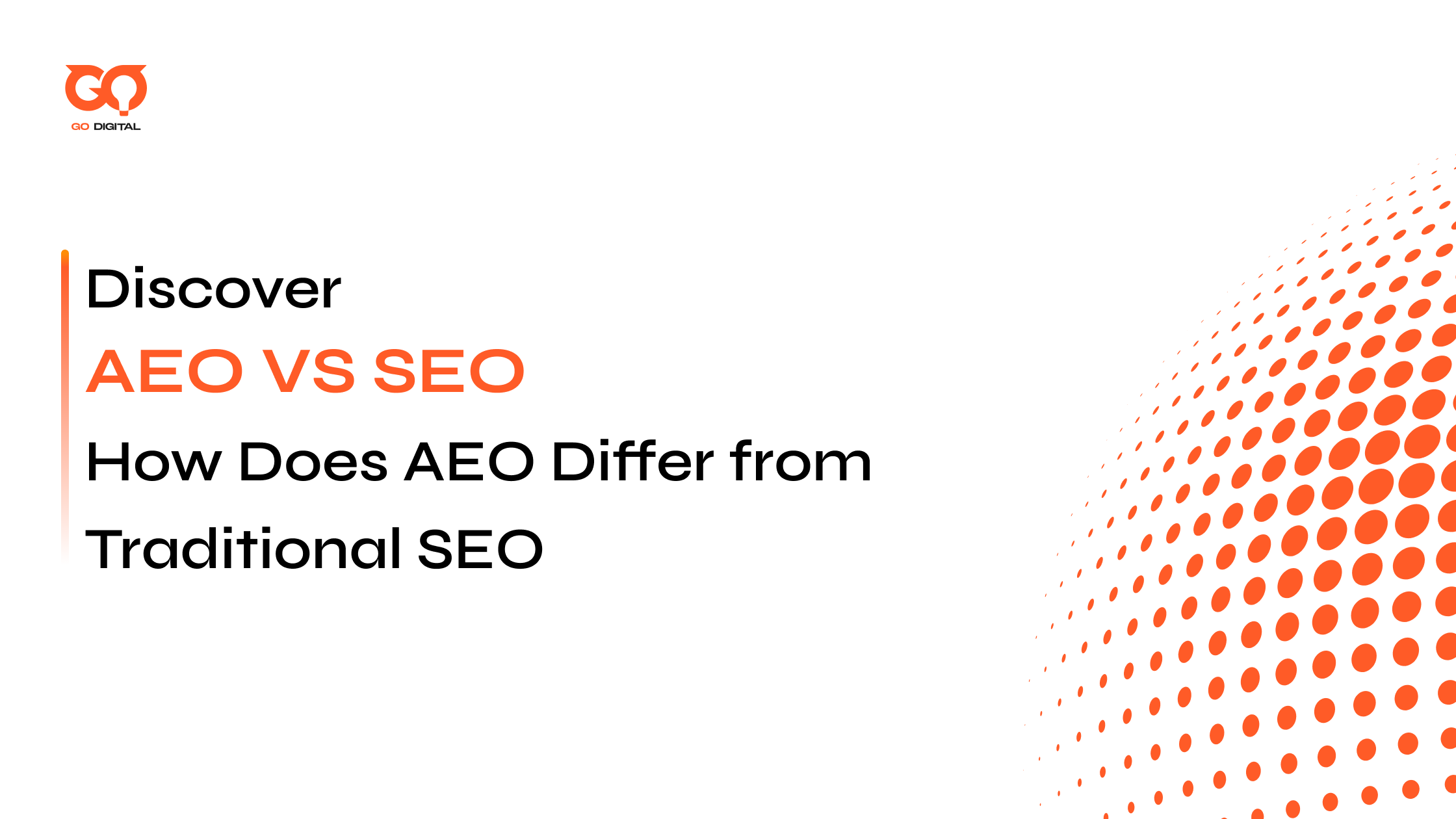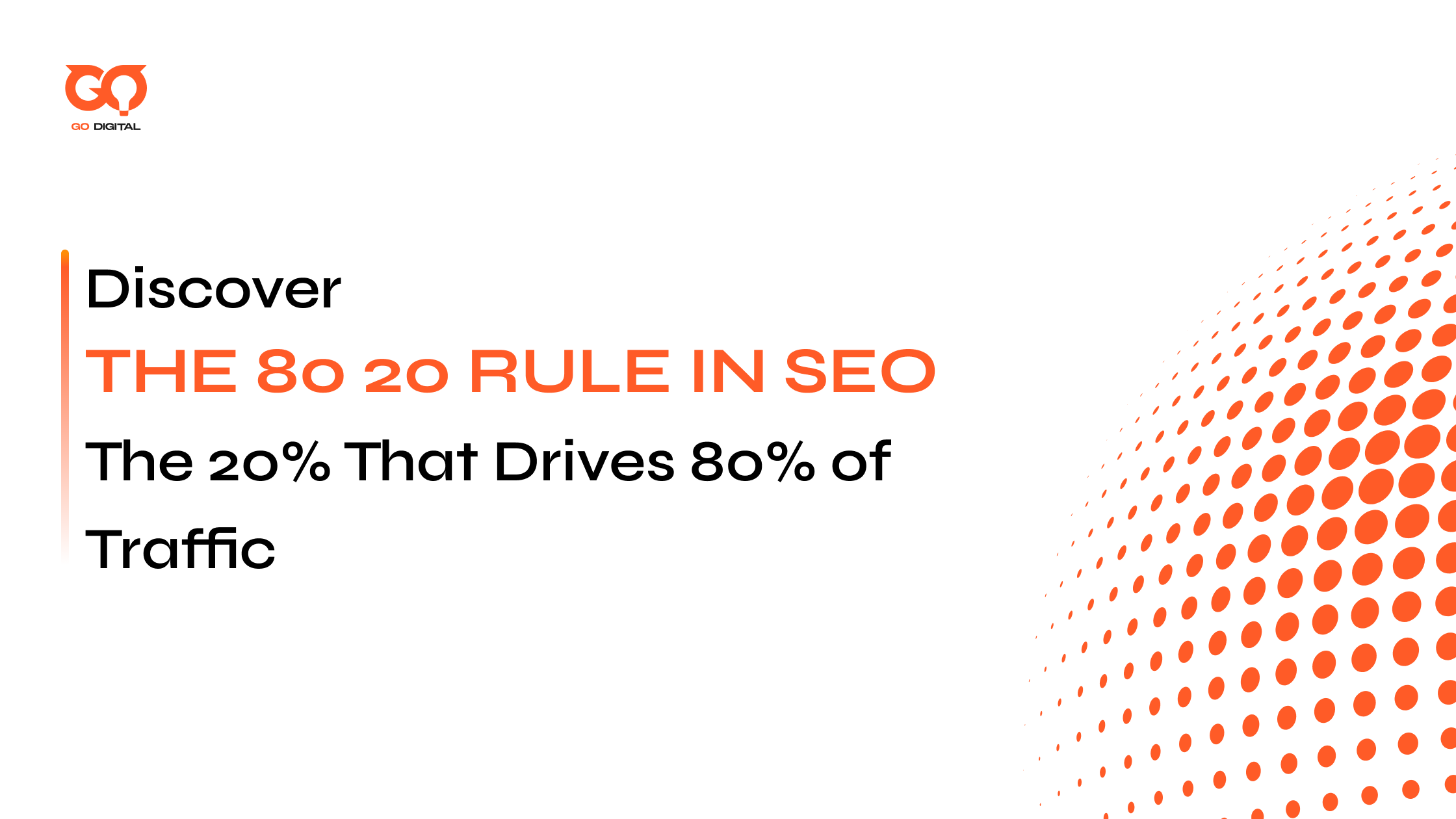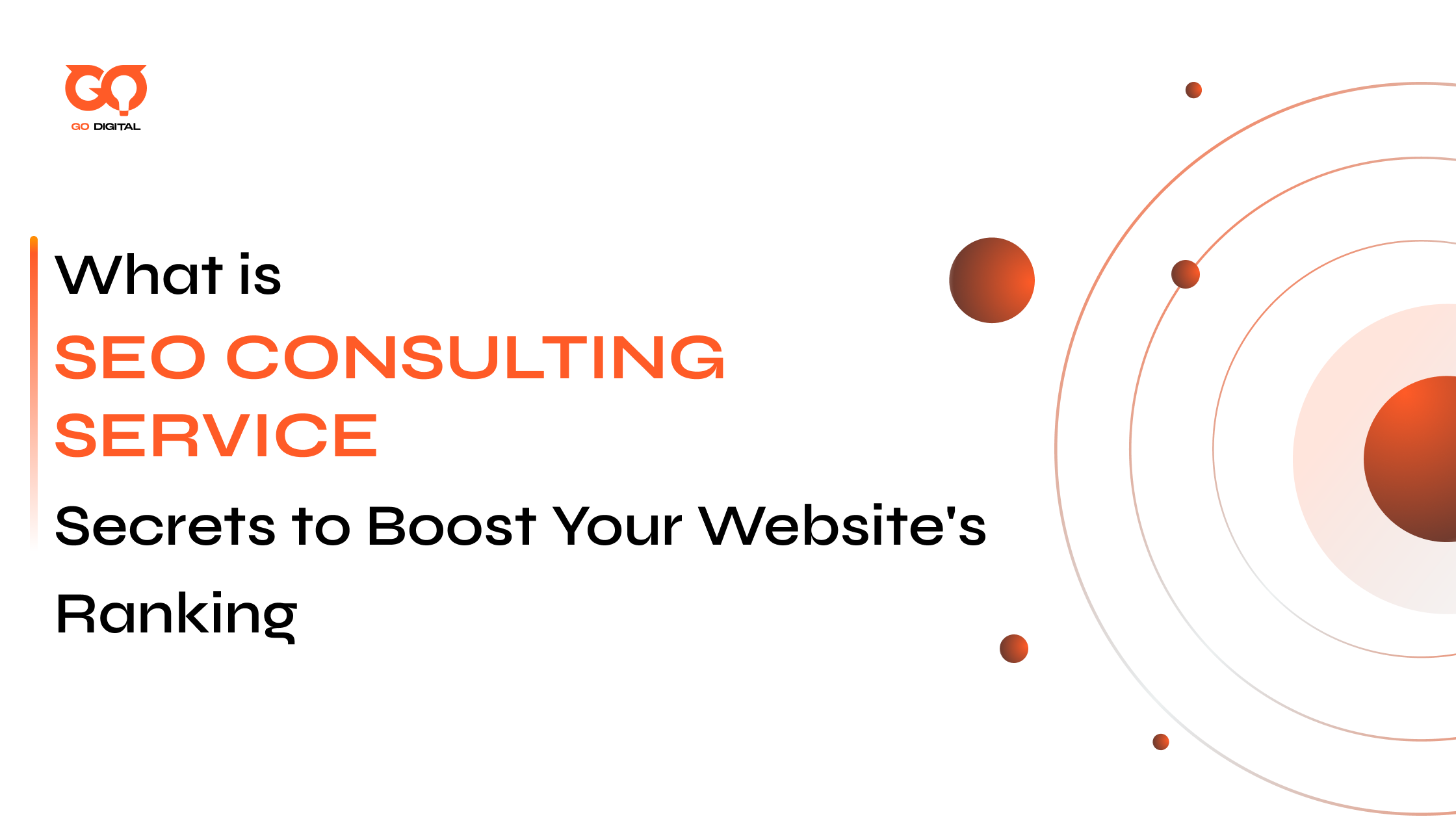Search is changing fast. Traditional links are now competing with AI-generated answers, making marketers wonder how does AEO differ from traditional SEO and why both matter.
With tools like Google AI Overviews and Bing Copilot, Answer Engine Optimization (AEO) is becoming essential.
This guide shows you how to optimize for both traffic and AI-driven visibility in a simple, practical way.
Key takeaways:
|
What Is Answer Engine Optimization (AEO)?
Answer Engine Optimization (AEO) is the practice of designing your content so that AI tools, voice assistants, and machine-driven search engines can easily extract, understand, and present your information as a complete answer.

Answer Engine Optimization and how it supports AI-powered search results
AEO focuses on helping your business appear in:
- Conversational AI answers
- Google SGE summaries
- Featured snippets
- People Also Ask boxes
- Voice search responses
- AI-generated comparison charts
- Direct knowledge panels
- “Zero-click” result blocks
In other words, AEO ensures you show up even when users don’t open your website.
AEO’s Core Principles
AEO revolves around several important principles that separate it from traditional SEO. Because answer engines rely heavily on natural language and structured information, AEO emphasizes:
- Clear, direct explanations: Answer engines prefer content that states the main point upfront, followed by concise elaboration.
- Structured, scannable formatting: Tools extract answers more easily when content includes headings, lists, short paragraphs, and well-labeled sections.
- Factual accuracy and verifiable sources: AI-powered search engines prioritize content that is trustworthy, consistent, and backed by expertise.
- Question-driven optimization: Instead of targeting a keyword like “SEO trends,” AEO targets user questions such as “What are the most important SEO trends for 2025?”
- Schema markup: Structured data (FAQ, HowTo, Article schema) helps answer engines interpret your content correctly.
- E-E-A-T elements: Experience, Expertise, Authoritativeness, and Trustworthiness determine whether AI considers your page a reliable source.
How AEO Works with AI-Driven Search Engines
Unlike classic search engines that rank pages based on relevance, backlinks, and authority, AI-driven platforms like Google SGE, Bing Copilot, and ChatGPT Search often extract content directly from web pages to generate summarized answers for users.
Here’s how AEO functions in this context:
- Content Extraction: AI algorithms scan websites and analyze content to find the most relevant information for a user query. Well-structured content with clear answers is more likely to be selected.
- Answer Presentation: Once AI identifies an answer, it may present it in multiple ways: featured snippets, People Also Ask boxes, voice responses, or AI-generated summaries.
- Trust Evaluation: AI systems assess the reliability of content. Factors include factual correctness, source authority, author expertise, and user engagement signals.
- Iterative Learning: AI continually learns from user interactions. If your answer is concise, accurate, and helpful, it is more likely to be reused in future AI responses, increasing your brand visibility over time.
Let’s imagine a user asks:“How long does it take to build a custom mobile app?”
→ AEO-optimized content responds like this: “Most custom mobile apps take between 3 and 9 months to build, depending on features, team size, and complexity.”
Then it follows with supporting details such as:
- What affects timelines
- Case examples
- Cost ranges
- Project phases
The AI may then display these points as a direct answer in a search assistant, allowing your page to gain visibility even if the user does not click through.
In summary, AEO is not just an extension of SEO, it is a strategic approach focused on being the chosen answer for AI-driven search engines.
What Is Traditional SEO?
Traditional SEO has been the foundation of search visibility for more than two decades. It focuses on improving organic traffic by getting your webpages to rank higher on Google, Bing, and other search engines.

Overview of traditional SEO principles and its goals
This process includes:
- Researching keywords
- Creating high-quality content
- Optimizing metadata
- Building backlinks
- Improving technical performance
- Ensuring mobile responsiveness
- Strengthening site structure
The ultimate goal of SEO is straightforward: earn more search-driven website visits.
What Traditional SEO Does Best
Traditional SEO shines at generating long-term, compounding traffic. Because search engines still drive a large portion of global digital activity, SEO remains a powerful tool for brand awareness and conversion.
It performs especially well in areas like:
- Authority building. Ranking highly signals credibility and trustworthiness to users.
- Long-form content visibility. Blog posts, guides, product pages, and landing pages all benefit from SEO optimization.
- Conversion-focused traffic. Many visitors arrive on a website with commercial intent, meaning they’re closer to making a decision.
- Evergreen visibility. A well-ranked page can generate traffic sustainably for years.
- Business growth. Search remains one of the highest-ROI channels across industries.
According to BrightEdge, organic search still accounts for more than 53% percent of total traffic across all websites. Even with AI-driven tools, users continue to rely on traditional search when they need more depth, credibility, or comparison.
How SEO Aims for Traffic and Rankings
The ultimate goal of SEO is to attract organic traffic by securing high positions in search results. Unlike paid advertising, SEO is a long-term strategy focused on building sustainable visibility.
- Targeting the Right Audience: SEO ensures that your website appears for searches that are relevant to your business.
- Ranking Optimization: Pages are optimized to appear in top positions for competitive keywords. Higher rankings lead to higher visibility and more clicks.
- Driving Engagement and Conversions: SEO doesn’t just drive traffic—it drives qualified traffic. Users who find your page through search are often actively seeking solutions, making them more likely to engage, subscribe, or convert into customers.
- Supporting Brand Authority: High-ranking content positions your brand as an authority in your niche. Over time, consistent SEO efforts establish trust, which can influence purchasing decisions, partnerships, and industry reputation.
- Measurable Results: Tools like Google Search Console, Ahrefs, and Semrush allow businesses to track keyword rankings, organic traffic, and CTR, providing actionable insights to refine SEO strategy continuously.
In summary, traditional SEO focuses on visibility, relevance, and authority to drive organic traffic.
SEO vs AEO: What Are the Core Differences?
Although SEO and AEO share the same ultimate purpose – connecting users with the information they want, they approach the problem very differently.
Below is a detailed comparison highlighting the core differences between traditional SEO and Answer Engine Optimization:
| Aspect | Traditional SEO | Answer Engine Optimization (AEO) |
| Primary Goal | Drive organic traffic to your website | Be the source of the answer for AI-driven search |
| Search Intent Focus | Keyword-based queries | Natural language questions |
| Content Structure | Longer content, detailed narratives, supporting examples | Clear, concise answers with structured formatting (headings, lists, tables) |
| User Outcome | Users visit your website for exploration or purchase | AI or voice assistants deliver answers directly, sometimes without clicks |
| Optimization Method | Keyword placement, backlinks, meta tags, internal linking | Schema markup, FAQ/ HowTo, structured answers, E-E-A-T signals |
| Metrics | Rankings, organic clicks, impressions, backlink growth, CTR | Featured snippet ownership, People Also Ask visibility, AI answer citations, zero-click impressions |
| Timeframe for Results | Medium to long-term; months to see stable rankings | Can see impact faster if content is structured for AI extraction |
| User Engagement | Measured via session duration, bounce rate, conversions | Measured via accuracy of answers and frequency of AI citations |
Why You Need Both SEO and AEO (and How They Work Together)
Now that we understand what makes SEO and AEO different, the next question becomes: Should businesses prioritize one over the other?
The short answer is no. They work best together.
Think of SEO as the foundation and AEO as the enhancement layer that ensures your visibility remains strong even as search evolves.
Why SEO and AEO complement each other and how to use both
Complementary, Not Competitive
Many marketers treat AEO as a replacement for SEO, but this is not the case. Instead, AEO fills in the gaps left by traditional search.
SEO helps you rank when users browse. AEO helps you appear when users ask questions conversationally or seek instant answers.
AEO supports SEO in several ways:
- Structured content helps Google understand your pages more easily.
- Clear answer blocks improve overall readability.
- Schema markup boosts the chance of appearing in rich results.
In real-world audits we’ve conducted at Golden Owl Digital, pages optimized for AEO often saw SEO improvements as well. This is because both strategies reward clarity, precision, and relevance.
Balancing Traffic and Visibility
To succeed in 2025 and beyond, businesses need both forms of visibility.
SEO brings in visitors who want depth. AEO brings in visibility among users who want quick answers.
For example, a CEO might ask their voice assistant:“How do I reduce software development costs?” This is where AEO shines.
Later, they might open Google and search: “best offshore software development companies.”
This is where SEO brings traffic.
In short, the two touchpoints work together to guide the user toward your brand at different points in their journey.
How to Combine AEO & SEO Effectively
A practical way to combine both approaches is to build SEO-rich content around a topic, then include AEO-friendly elements within the page.
For example, a full guide on “The Cost of Mobile App Development” may include:
- A short, direct answer block
- A detailed breakdown of different scenarios
- A FAQ section
- Structured headings
- Tables showing cost ranges
- Schema markup
- Conversational explanations
SEO attracts the reader.
AEO prepares your content to be quoted by AI.
This blended approach helps businesses stay competitive regardless of how search engines evolve.
Practical Tips: How to Optimize for AEO & SEO Together
Now that we understand why both strategies are essential, let’s explore how to implement them.
Each heading below expands on one practical method, with guidance, examples, and the reasoning behind each approach.
Research for Both Keywords and Questions
Traditional SEO begins with keyword research. AEO begins with question research. To optimize for both, you must combine these two perspectives.
Researching keywords and user questions for SEO and AEO
Here is how:
- Start with a core keyword, such as “customer onboarding software.”
- Identify long-tail variations like “best onboarding software for SaaS companies.”
- Expand into questions using tools like AnswerThePublic or AlsoAsked.
- Analyze People Also Ask boxes to understand real user concerns.
- Use LLM tools like ChatGPT to generate conversational versions of queries.
By gathering both keyword-based and question-based data, you build a more complete understanding of user intent.
This allows you to create content that satisfies both searchers and answer engines.
Use Clear, Structured Content
Answer engines rely on content structure to understand what information belongs where. The more structured your content, the easier it is for AI tools to extract the right sections.
Examples of effective structure include:
- Placing the direct answer at the beginning of each section
- Breaking explanations into short, readable chunks
- Including step-by-step lists where appropriate
- Labeling examples clearly
- Using tables to compare key data points
Even a highly technical topic becomes more approachable when the content is well-organized.
For instance, a section explaining app development timelines will perform better if it is divided into discovery, design, development, and testing phases rather than described in a single narrative.
Write Conversationally
AEO tools are built on natural language models. They respond well to content that matches how people naturally speak and ask questions.
This does not mean writing casually.
It means writing clearly, directly, and in a human-centered manner.
For example, instead of writing: “Application development timelines fluctuate due to variable determinants.”
You might write: “The time it takes to build an app depends on how many features you need, the design complexity, and the size of the development team.”
Use simple verbs, real-world examples, and clear transitions. If someone could read your content out loud and it sounds natural, you’re already optimizing for AEO.
Strengthen Technical SEO
Technical performance acts as the foundation for both SEO and AEO. If your site loads slowly, has broken elements, or is not mobile-friendly, both search engines and AI assistants are less likely to reference it.
Technical SEO practices support both rankings and answer extraction
Technical improvements include:
-
- Ensuring Core Web Vitals meet or exceed benchmarks
- Improving server response time
- Compressing images without losing quality
- Using lazy loading where appropriate
- Cleaning up redirect chains
- Removing duplicated pages
- Upgrading hosting if needed
Many answer engines prefer fast, lightweight pages because they can extract information more quickly.
Even if your content is excellent, technical issues may prevent AI tools from interpreting it correctly.
Implement Schema Markup and E-E-A-T Signals
Schema markup works like a label that tells search engines what a specific piece of information means. For AEO, schema is particularly helpful because it makes extraction easier and more reliable.
Common schema types for AEO include:
- FAQ schema for question-based content
- HowTo schema for step-by-step instructions
- Article schema for blog posts
- Organization schema for brand details
- Breadcrumb schema for site hierarchy
In addition to schema, E-E-A-T signals strengthen credibility. Answer engines are cautious about accuracy, so they prioritize trustworthy sources.
Ways to build E-E-A-T include:
- Adding author bios
- Citing reputable sources
- Providing case studies
- Showing organizational credentials
- Demonstrating real-world experience
When your content reflects expertise and trustworthiness, AI tools are more likely to present it as an authoritative answer.
Tools and Metrics to Track Success (SEO KPIs vs AEO KPIs)
As businesses adopt AEO strategies, measuring performance becomes more nuanced. Traditional SEO metrics still matter, but they no longer tell the full story.
| Category | SEO KPIs | AEO KPIs | Recommended Tools |
| Primary Focus | Organic traffic, search engine rankings, backlinks | AI-driven answer visibility, featured snippets, zero-click answers | Google Search Console, Semrush, Ahrefs, Moz, Screaming Frog |
| Ranking Metrics | Keyword positions, SERP rankings, domain authority | Featured snippet ownership, People Also Ask appearance | Semrush, Ahrefs, Moz, Google Search Console |
| Traffic Metrics | Organic clicks, impressions, CTR, sessions | AI answer impressions, zero-click engagement | Google Analytics, Perplexity Analytics, Bing Webmaster Tools |
| Content Engagement | Average session duration, bounce rate, pages per session | Accuracy of answer extraction, frequency of AI citations | Google Analytics, ChatGPT Search Insights (beta), Bing Webmaster |
| Technical Performance | Page load speed, Core Web Vitals, mobile usability | Structured data errors, schema validation | Google PageSpeed Insights, Google Search Console, Schema.org Validator |
| Link & Authority Metrics | Number of backlinks, referring domains, domain authority | AI trust signals, E-E-A-T indicators | Ahrefs, Majestic, Semrush |
| Conversion & Outcomes | Goal completions, form submissions, ecommerce transactions | Click-through from AI answer to site, voice assistant engagement | Google Analytics, GA4, Mixpanel |
🔻 Practical Tip: To track both effectively:
- Use SEO tools like Google Search Console and Ahrefs to monitor rankings, clicks, and backlinks.
- Use AEO-focused tools or AI search simulations to check how often your content appears in featured snippets, People Also Ask, or AI-generated answers.
- Regularly audit content for structured data, clarity, and E-E-A-T signals to maximize chances of AI selection.
- Combine insights into a single reporting dashboard to track performance comprehensively.
Common Mistakes to Avoid When Optimizing for AEO
Many businesses unintentionally limit their AEO potential by using outdated SEO practices or by overlooking important elements of content design.
Below are some common mistakes:
- Neglecting foundational SEO: Poor site speed, weak domain authority, or technical issues reduce AI trust. AEO depends on strong SEO to be cited.
- Over-optimizing for conciseness: A short answer block must be supported by comprehensive, authoritative content. Avoid minimalist pages; embed answers in rich, SEO-optimized articles.
- Misunderstanding zero-click value: Being cited in AI responses without clicks still builds brand recognition, authority, and long-term search influence.
- Failing to use conversational phrasing: Stiff, keyword-heavy language struggles to be synthesized by AI. Write naturally and address the user directly.
- Ignoring schema markup: Using FAQPage, HowTo, or other structured data helps AI extract answers efficiently. Missing this is a lost opportunity.
With a few adjustments, these issues can be corrected quickly, dramatically improving both ranking potential and AI visibility.
Conclusions
SEO and AEO serve complementary purposes: SEO drives traffic, while AEO boosts visibility and authority in AI-driven search. Together, they maximize reach, credibility, and long-term growth.
To succeed:
- Provide clear, structured, and authoritative content.
- Optimize for both keywords and natural language questions.
- Track performance using SEO and AEO metrics.
At Golden Owl Digital, we help brands combine SEO and AEO strategies to increase traffic, enhance authority, and appear as trusted answers in AI search. Partner with us to make your content both discoverable and AI-approved.
FAQ
Q1: Is AEO just a new name for SEO?
AEO is not a renaming of SEO. Instead, it expands SEO into the world of AI-driven search. SEO helps pages rank. AEO helps answers appear in conversational tools, voice assistants, and AI summaries.
Q2: Will traditional SEO still matter in 2026?
Yes. Even as AI search grows, users still rely on traditional search for depth, research, and decision-making. SEO provides long-term stability that AEO cannot replace.
Q3: Will AEO Replace SEO?
No. AEO complements SEO but does not make it obsolete. SEO ensures your site ranks. AEO ensures your best answers surface in AI-driven environments.
Q4: How to measure success with AEO-specific KPIs?
You can track success through metrics like snippet ownership, visibility in People Also Ask, SGE answer citations, voice assistant responses, and zero-click impressions. These metrics highlight how often AI tools identify your content as a trusted answer.

Jaden is an SEO Specialist at Golden Owl Digital. He helps brands rank higher with technical SEO and content that resonates






